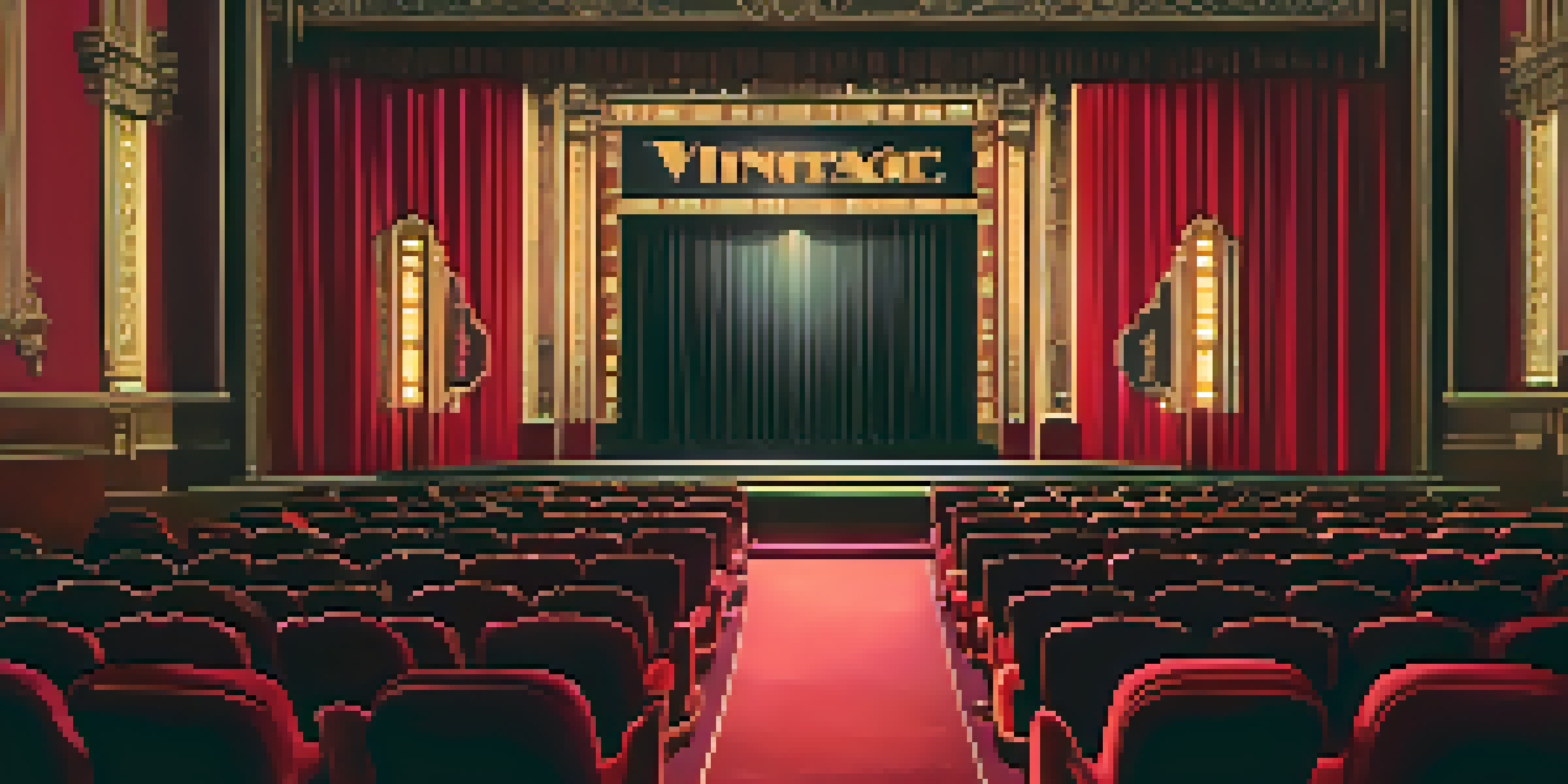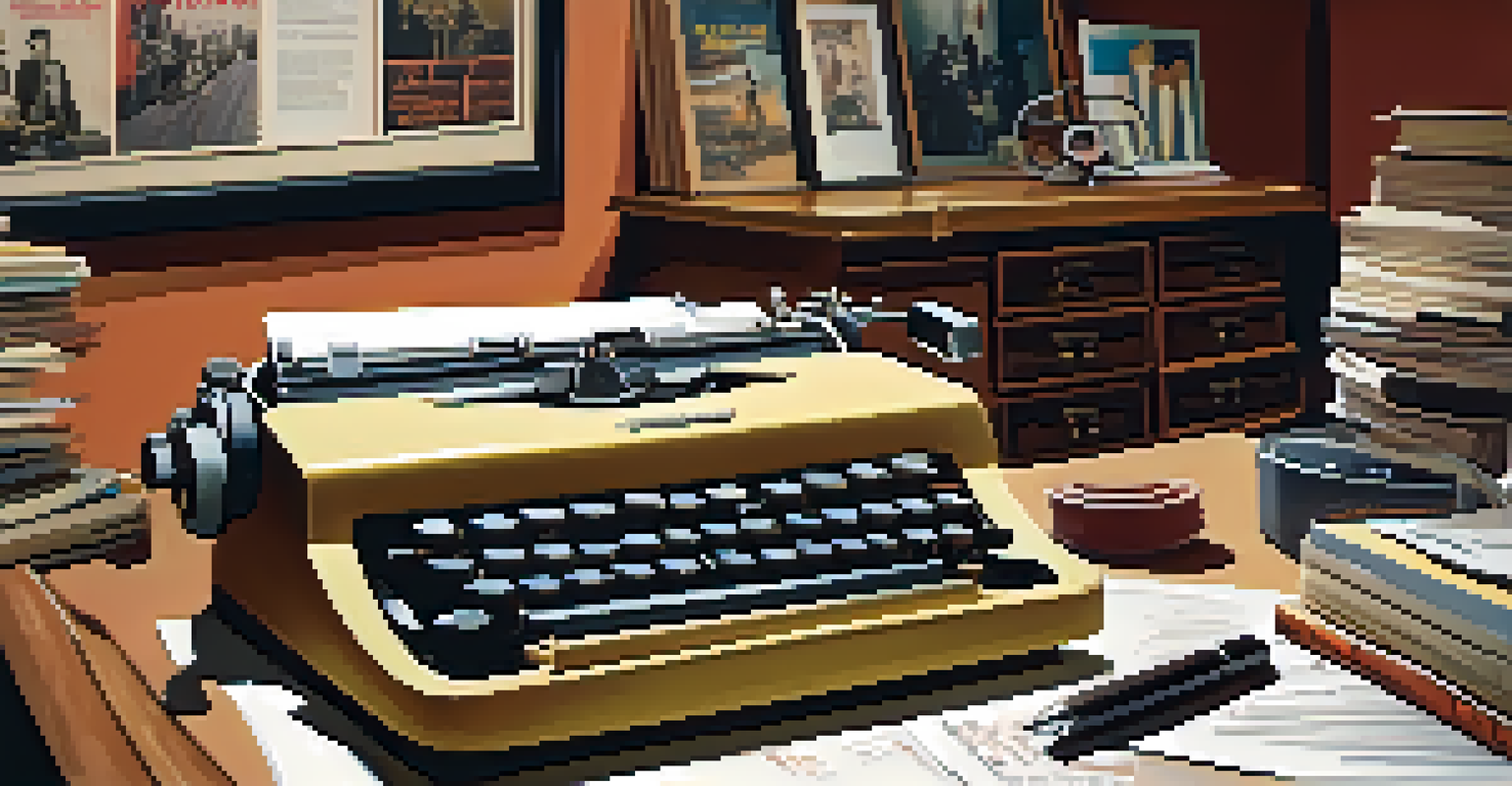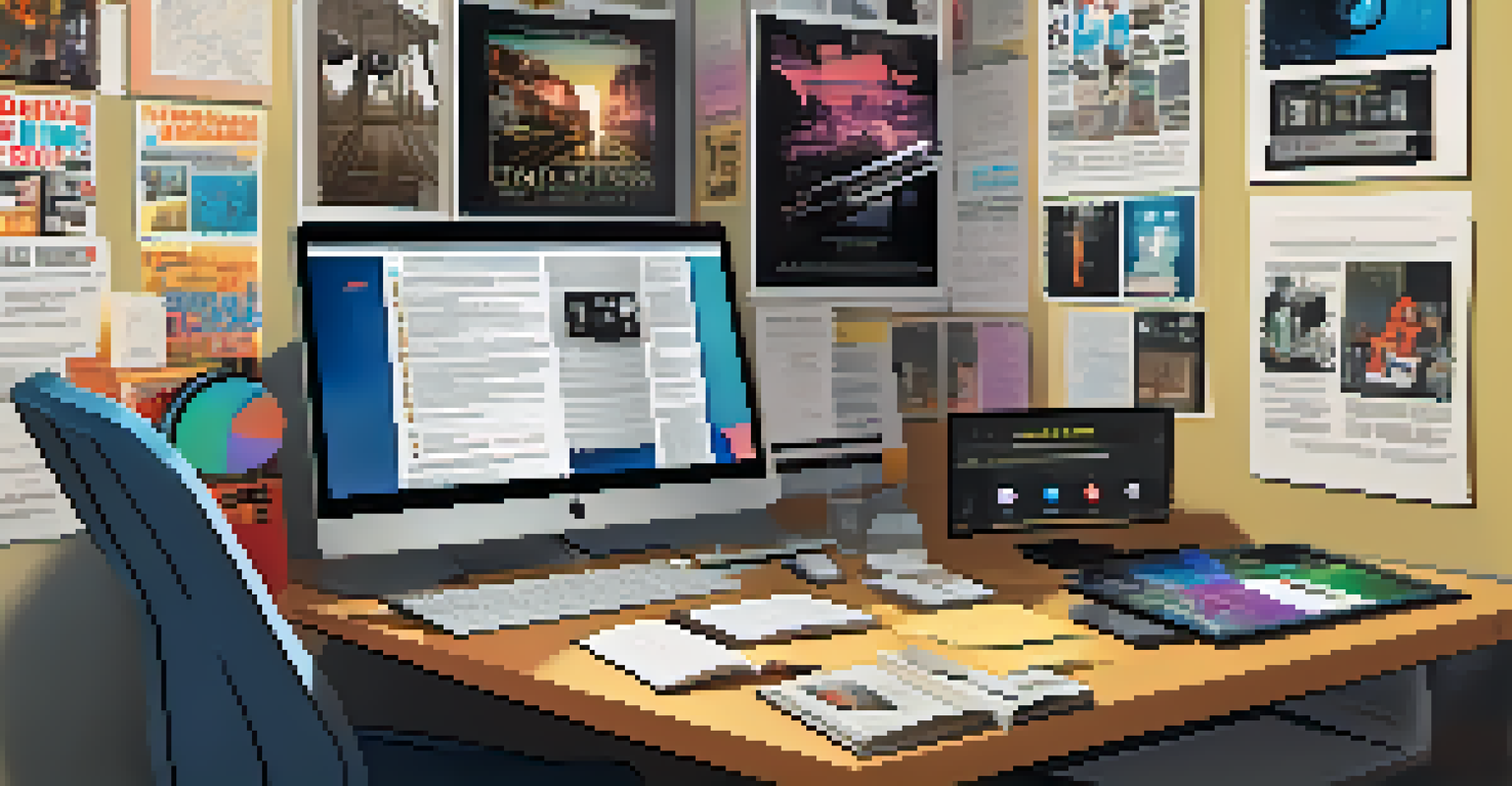The Origins of Film Criticism: From Silent Films to Talkies

The Birth of Cinema: Silent Films Emerge
The journey of film criticism began in the late 19th century with the advent of silent films. These early motion pictures captivated audiences, but they also sparked discussions about their artistic value and cultural significance. Critics of the time were often journalists who wrote reviews in newspapers, shaping public opinion and encouraging a deeper appreciation for this new medium.
Film is a powerful thing. It can change our lives, it can change our minds, it can change our hearts.
Silent films, with their reliance on visuals and intertitles, pushed critics to focus on the cinematography and storytelling techniques. Iconic films like 'The Great Train Robbery' and works by pioneers such as Lumière and Méliès provided fertile ground for critical analysis. Critics had to be creative in articulating their thoughts since dialogue was absent, leading to a unique style of film criticism.
As cinema gained popularity, film criticism started to develop its own language. Writers began using metaphors and vivid descriptions to capture the essence of a film's impact, much like art critics evaluating paintings. This marked the beginning of a more structured approach to film reviews, establishing a foundation for what would evolve into a thriving critical landscape.
The Rise of Film Journals and Dedicated Critics
By the 1910s and 1920s, film journals began to emerge, providing a platform for dedicated film critics. Publications like 'The Film Daily' and 'Sight & Sound' allowed critics to share their insights with a wider audience. This period saw the rise of influential critics who shaped the discourse around cinema, including figures like James Agee and Pauline Kael.

These critics brought a sense of authority to film analysis, often blending personal opinion with a broader cultural critique. They explored themes, techniques, and the emotional resonance of films, encouraging audiences to engage with cinema on a deeper level. Their writings not only informed viewers but also influenced filmmakers, creating a dynamic relationship between critics and the industry.
Silent Films Spark Critical Discussion
The emergence of silent films in the late 19th century ignited a unique style of film criticism focused on visuals and storytelling techniques.
The establishment of film criticism as a respected profession meant critics had the power to elevate lesser-known films, helping them gain recognition. This era marked a significant shift as film criticism began to be seen as an art form in itself, with critics becoming cultural commentators who could influence trends and tastes in cinema.
Transition to Sound: The Impact of Talkies
The introduction of sound in films, known as 'talkies', in the late 1920s revolutionized the film industry and film criticism. With the release of 'The Jazz Singer' in 1927, audiences were not only captivated by visuals but also by dialogue and soundtracks. This shift prompted critics to reevaluate their analytical approaches, as new elements needed to be considered.
Cinema is a matter of what's in the frame and what's out.
Critics began to assess the integration of sound, music, and dialogue in storytelling. The complexity of films increased, leading to richer, more nuanced critiques that addressed how sound influenced emotional engagement and narrative structure. This evolution also highlighted the need for critics to adapt their vocabulary to discuss these new cinematic elements.
As films became more sophisticated, so did the expectations of critics and audiences alike. The importance of sound in film opened up discussions about performance, voice modulation, and even the cultural implications of the language used. This period marked a turning point where criticism began to reflect the multifaceted nature of filmmaking.
The Golden Age of Hollywood and Its Critics
The 1930s to 1950s are often referred to as the Golden Age of Hollywood, a time when film production flourished and critics became more influential. With the rise of major studios, films became grander in scale and ambition, leading critics to grapple with the intricacies of commercial cinema versus artistic expression. This duality became a central theme in film criticism during this era.
Critics like Bosley Crowther and Judith Crist became household names, their reviews shaping public perception of films. They often faced the challenge of balancing their critiques with the commercial success of movies, leading to debates about the role of critics in a profit-driven industry. This tension highlighted the evolving relationship between film, criticism, and audience expectations.
Talkies Transform Critique Methods
The introduction of sound in films during the late 1920s required critics to reevaluate their approaches, integrating music and dialogue into their analyses.
During this time, film criticism also began to reflect societal changes, with critics exploring themes such as race, gender, and political commentary in films. This new lens allowed for a richer dialogue about the medium, making critics essential voices in understanding the cultural landscape of the time. The Golden Age solidified the role of film critics as influential players in the cinematic world.
The Emergence of New Criticism Styles in the 1960s
The 1960s brought a wave of change in both cinema and film criticism, marked by the emergence of new styles and movements. As filmmakers began to push boundaries with experimental techniques and storytelling forms, critics had to adapt their approaches to analyze these innovative works. The rise of French New Wave and American independent films challenged traditional norms, leading to a more subjective form of criticism.
Critics started to embrace personal narrative and emotional response in their reviews. Influential critics like Roger Ebert and Andrew Sarris championed films that broke from convention, encouraging audiences to seek out unique cinematic experiences. This shift not only broadened the scope of film criticism but also democratized it, as more voices entered the conversation.
The 1960s also saw the rise of academic film studies, with critics exploring theoretical frameworks to analyze films. This included approaches like auteur theory, which posited that a film reflects the vision of its director as an author. Such theories provided a new lens through which to evaluate films, further enriching the critical landscape and expanding the dialogue around cinema.
The Influence of Television and Digital Media
The advent of television and later, the internet, dramatically transformed film criticism. In the 1970s and beyond, televised film reviews brought cinematic discussions into living rooms, making critics more accessible to the general public. Shows like 'Siskel & Ebert' popularized the idea of film criticism as a form of entertainment, blending opinion with engaging dialogue.
As digital media emerged, so did a new wave of critics who utilized platforms like blogs and social media to share their thoughts. This shift democratized film criticism, allowing anyone with an internet connection to contribute their voice. The immediacy of online reviews changed how audiences interacted with films, leading to real-time discussions and debates.
Evolving Criticism in Digital Age
The rise of television and digital media has democratized film criticism, allowing diverse voices to engage audiences while also raising concerns about quality and credibility.
However, this accessibility also brought challenges, as the quality and credibility of reviews became a concern. With the saturation of opinions online, audiences learned to navigate through the noise to find trusted voices. This evolution highlighted the importance of discerning criticism amidst a plethora of content, reaffirming the value of well-researched and thoughtful reviews.
The Future of Film Criticism: Trends and Innovations
Today, film criticism continues to evolve, influenced by changing technologies and cultural landscapes. With the rise of streaming platforms, critics find themselves evaluating a broader array of content, including short films, series, and international cinema. This expansion has opened new avenues for critical analysis, encouraging critics to explore diverse storytelling techniques and genres.
Emerging trends also include a focus on representation and inclusion in film criticism. Critics are increasingly aware of the need to amplify underrepresented voices and stories, leading to a richer, more nuanced discourse around cinema. This shift not only impacts how films are critiqued but also how they are created, fostering a more diverse industry.

As we look to the future, the role of film critics will likely adapt further with advancements in technology, possibly incorporating virtual reality and interactive storytelling into their analyses. The essence of criticism, however, remains unchanged: to engage audiences, provoke thought, and celebrate the art of film. The journey of film criticism is far from over, and its evolution promises to be as dynamic as the medium itself.